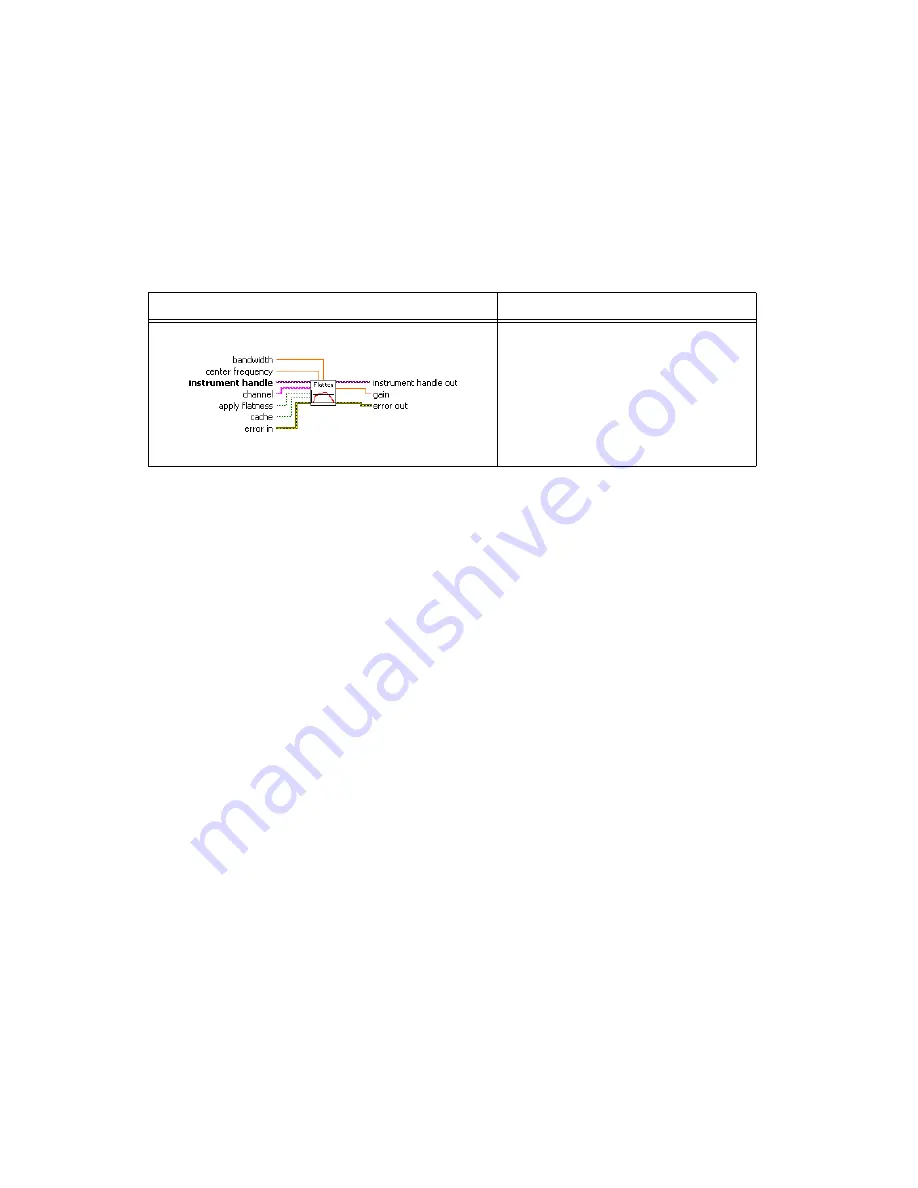
NI 5622 Calibration Procedure
26
ni.com
15. Repeat steps 16 through 23 for each
Input Frequency
listed for the
current iteration in Table 5.
16. This step varies depending on the programming language used.
(LabVIEW)
Configure the frequency response compensation using the Apply
Frequency Response Compensation VI. The
gain
value returned is the
Flatness Gain Correction Factor
used in step 23.
(C/C++)
Configure the custom coefficients for the equalization FIR filter of
the digitizer. Use the following function and attribute calls
to calculate the customer coefficients.
a.
To get the frequency response of the digitizer, call
niScope_GetFrequencyResponse
.
b.
To get the number of coefficients the FIR filter can accept, query
the
NISCOPE_ATTR_EQUALIZATION_NUM_COEFFICIENTS
attribute.
c.
To configure the custom coefficients for the FIR filter, call
niScope_ConfigureEqualizationFilterCoefficients
.
17. Configure the signal generator to generate an
Input Frequency
of a
1.25 V
pk-pk
sine wave for the current iteration in Table 5.
18. Wait the amount of time the manufacturer recommends for the output
to settle.
19. Measure the power (in watts) of the sine wave using the power meter.
This value is the
Power Meter Measured Sine Wave Power
used in
step 23.
LabVIEW VI
Input Parameters
Set the following parameters:
bandwidth
:
–1
center frequency
: The
Input Frequency
value in Table 5 for the current iteration
channel
:
“0”
apply flatness
:
TRUE
cache
:
FALSE
















































